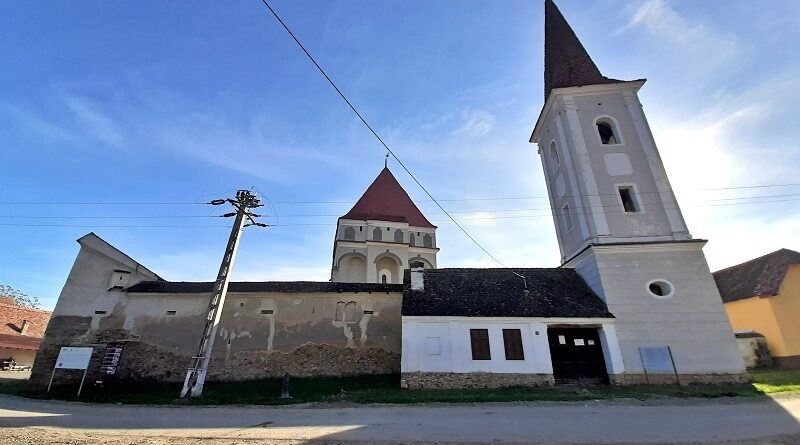The Fortified Church of Cloasterf (Klosdorf), Mureș County
In this destination guide we visit the Saxon fortified church of Cloasterf (Klosdorf) in Mureș County, Romania.
Drive to Cloasterf
Having visited the Saxon fortified church in Saschiz, the small village of Cloașterf was next on my list of places to visit.
It’s a 7-kilometre ride from Saschiz to Cloasterf and you can either take the main DN13 road or opt for the backroads.
Naturally, I decided to take the smaller country roads.
When you approach the village you can already see the fortified church towering high above grain fields and houses.
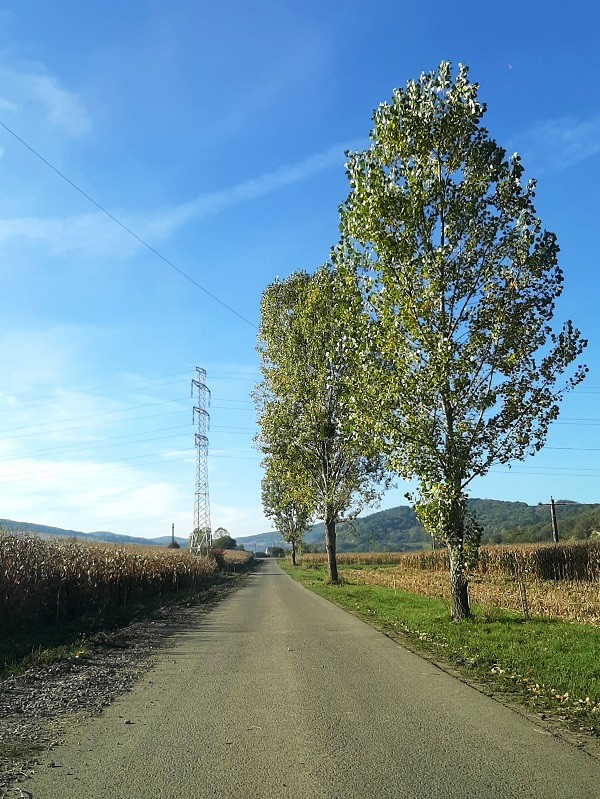


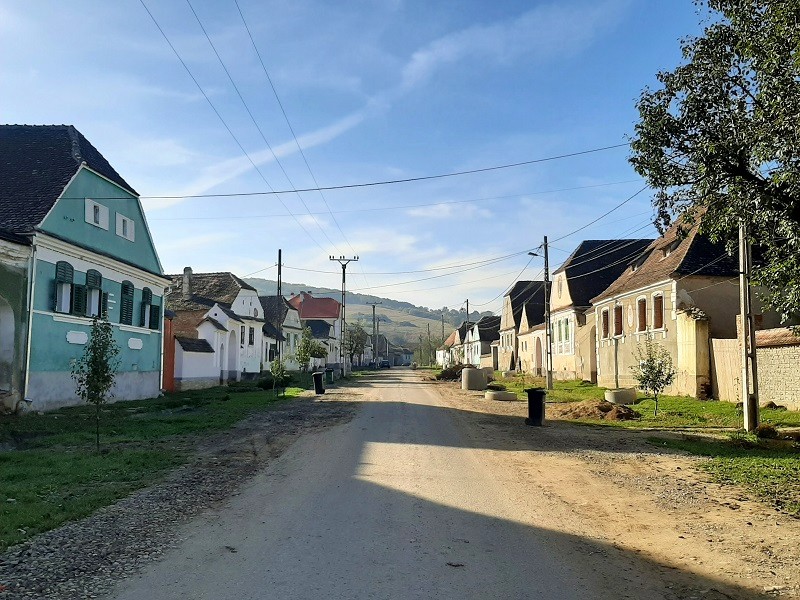
Cloasterf Saxon fortified church
Cloasterf (called Klosdorf in German by the Transylvanian Saxons) is a small village of under 200 inhabitants.
The Saxon fortified church in Cloasterf was built in the 16th century on the site of an older Romanesque church.
Although it is certainly not the most formidable fortified church in all of Transylania, there are a couple of reasons why Cloasterf’s church is special.
The church is quite unique in the fact that it was built in a single construction period between 1521 and 1524, making it much more of an architectural ensemble.
Other fortified churches in Transylvania were often built in multiple stages, with defensive structures being added or modified over the span of many years or even centuries.
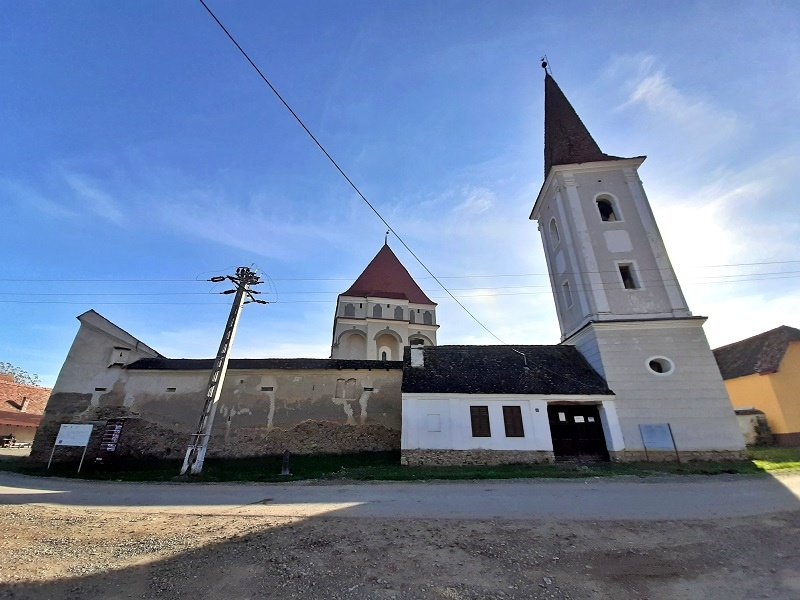

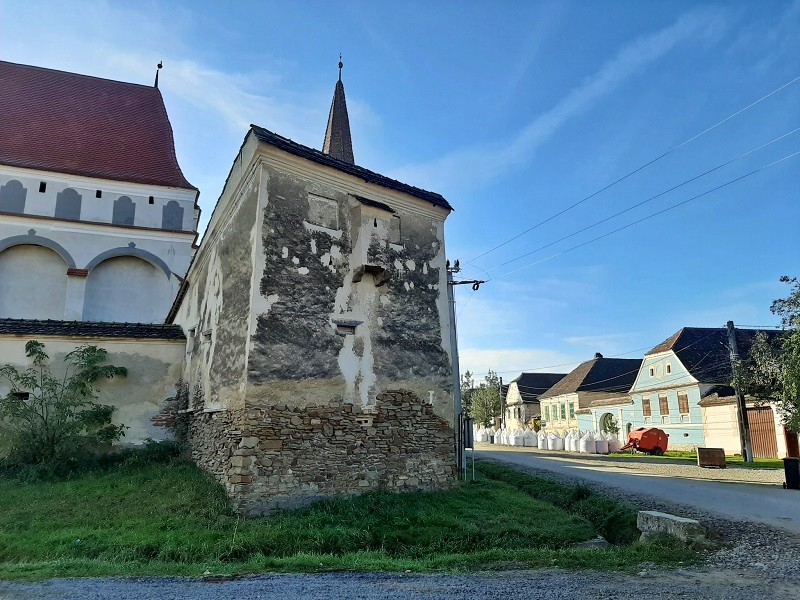
A walk around the church
The church door was firmly closed and although a note was posted with the telephone number of the key holder, I decided not to call as due to the limited amount of time I had I needed to be selective which of the churches I would visit inside.
Instead, I just wandered around the Evangelical Lutheran church to admire it from the outside.
The fortified church of Cloasterf has a relatively simple quadrilateral layout with four towers – one at each corner.
You will note that of the four towers, there are three smaller ones and one large belfry.
This belfry was only built at a later point in 1819, replacing a smaller tower similar to the others.
The exterior walls feature arrowslits through which archers could fire their arrows at attacking forces.
Of course, just like most other of these churches in smaller villages and towns throughout Transylvania, the purpose of the fortified church of Cloasterf was not to withstand a long siege but to protect the local population from bandits or in case of an attack from a well-prepared army to hold out long enough for a relief force to arrive.
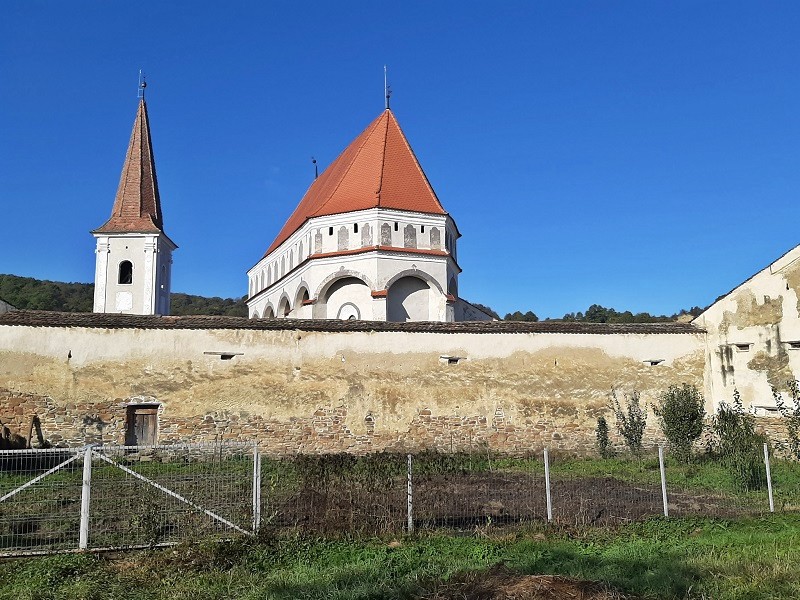
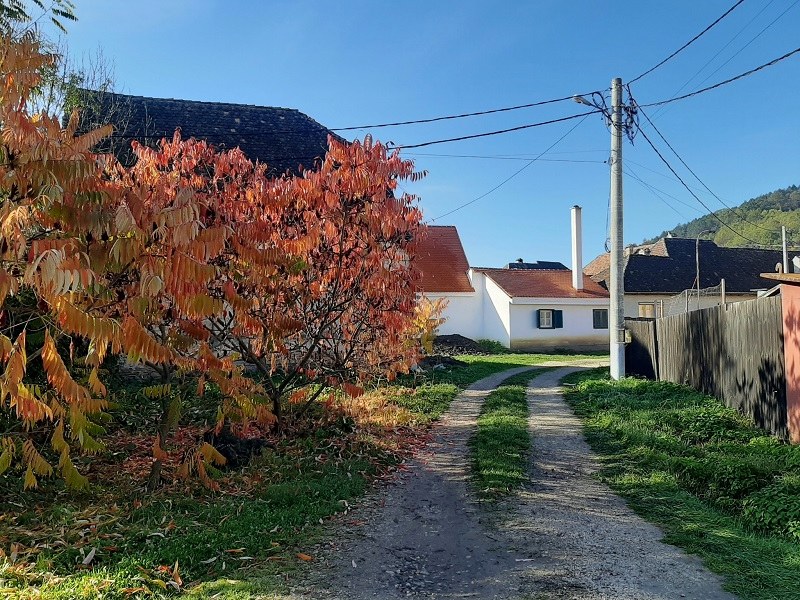

Conclusion
The Saxon fortified church in Cloasterf (called Klosdorf in German) is one of the smaller ones in Transylvania, although it is still fairly large if you consider how small the village actually is.
The most interesting fact about this fortified church is that it is an almost completely homogenous structure as everything except the belfry was built in a four-year period in the 16th century.
It makes for an interesting visit even from the outside and if you have time by all means have a look inside the church as well.
However, as the church is normally closed, you do need to contact the key holder for this.
Trip report index
This article is part of the ‘Visiting the Saxon Fortified Churches of Transylvania‘ trip report, which consists of the following chapters:
1. The Fortified Church of Harman (Honigberg), Brasov County
2. The Fortified Church of Prejmer (Tartlau), Brasov County
3. The Fortified Church of Feldioara (Marienburg), Brasov County
4. A Visit to Rupea Fortress
5. The Fortified Church of Homorod (Hamruden), Brasov County
6. Racoș: Exploring an Extinct Volcano and Abandoned Castle
7. In the Footsteps of King Charles: A Visit to Viscri, Romania
8. A Visit to the Fortified Church of Viscri, Brasov County
9. A Night Walk Around the Citadel and Old Town of Sighisoara
10. Review: Hotel Casa Wagner, Sighisoara, Romania
11. The Fortified Church of Saschiz (Keisd), Mureș County
12. The Fortified Church of Cloasterf (Klosdorf), Mureș County (current chapter)
13. The Fortified Church of Mesendorf (Meschendorf), Brasov County
14. The Fortified Church of Crit (Deutsch-Kreuz), Brasov County
15. The Fortified Church of Biertan (Birthälm), Sibiu County
16. The Fortified Church of Hosman (Holzmengen), Sibiu County
17. Review: Brukenthal Palace Hotel, Avrig
18. A Visit to Sambata de Sus and the Brancoveanu Monastery
19. Into the Carpathians: A Beautiful Drive to Moieciu de Sus

